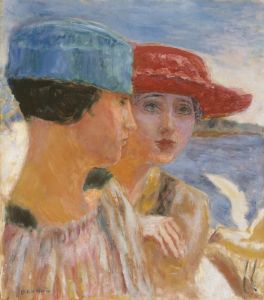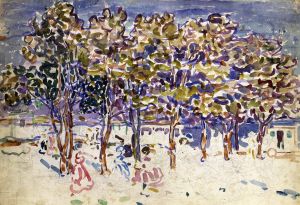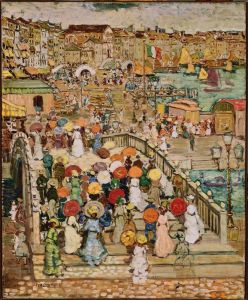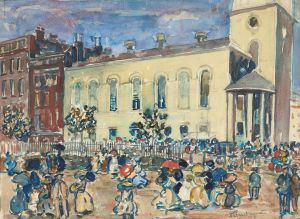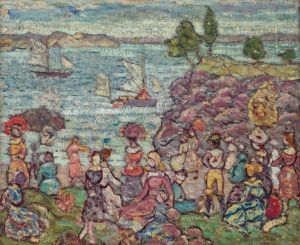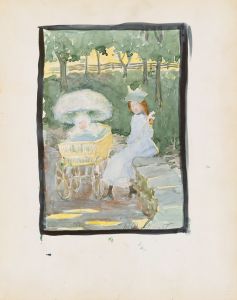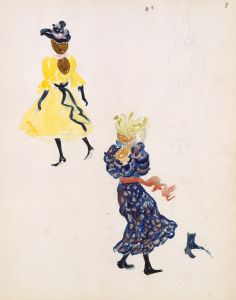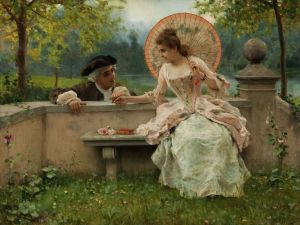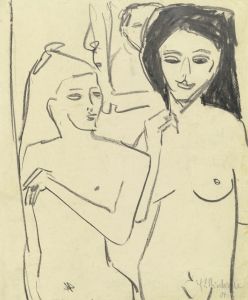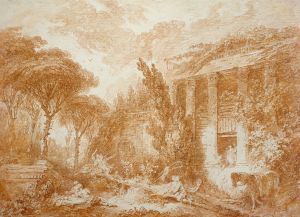
Two young girls and a woman with a parasol
A hand-painted replica of Maurice Prendergast’s masterpiece Two young girls and a woman with a parasol, meticulously crafted by professional artists to capture the true essence of the original. Each piece is created with museum-quality canvas and rare mineral pigments, carefully painted by experienced artists with delicate brushstrokes and rich, layered colors to perfectly recreate the texture of the original artwork. Unlike machine-printed reproductions, this hand-painted version brings the painting to life, infused with the artist’s emotions and skill in every stroke. Whether for personal collection or home decoration, it instantly elevates the artistic atmosphere of any space.
Maurice Prendergast was an American Post-Impressionist artist known for his vibrant and colorful depictions of leisurely scenes. One of his notable works is "Two Young Girls and a Woman with a Parasol," which exemplifies his unique style and artistic vision.
Maurice Prendergast was born in St. John's, Newfoundland and Labrador, in 1858, and later moved to Boston, Massachusetts. He was part of the group known as "The Eight," which included artists who were pivotal in the development of American modern art. Prendergast's work is characterized by its use of bright colors, bold patterns, and a focus on capturing the essence of social scenes and landscapes.
"Two Young Girls and a Woman with a Parasol" is a fine example of Prendergast's mature style. The painting showcases his interest in capturing the leisurely activities of people, a common theme in his work. The scene depicts two young girls and a woman, presumably their guardian, enjoying a day outdoors. The woman holds a parasol, a common accessory in the late 19th and early 20th centuries, used to shield from the sun. This detail not only adds to the historical context of the painting but also contributes to the composition's balance and elegance.
Prendergast's technique involved the use of watercolor and oil paints, often on paper or canvas. His approach was influenced by his studies in Paris, where he was exposed to the works of the Impressionists and Post-Impressionists. This influence is evident in his use of color and light, as well as his interest in capturing fleeting moments of everyday life.
In "Two Young Girls and a Woman with a Parasol," Prendergast employs a mosaic-like application of color, with patches of vibrant hues that create a sense of movement and liveliness. The figures are rendered with a degree of abstraction, which was a departure from the more detailed and realistic styles of earlier American art. This abstraction allows the viewer to focus on the overall mood and atmosphere of the scene rather than getting caught up in the specifics of the figures' appearances.
The painting reflects Prendergast's fascination with the interplay of light and color, as well as his ability to convey a sense of joy and tranquility. The use of a parasol not only serves a practical purpose within the scene but also acts as a compositional element that draws the viewer's eye and adds a touch of elegance to the work.
Prendergast's work, including "Two Young Girls and a Woman with a Parasol," is celebrated for its innovative use of color and form, which helped pave the way for future developments in American modern art. His paintings are held in high regard and can be found in major collections, including the Museum of Fine Arts in Boston and the Metropolitan Museum of Art in New York.
Overall, "Two Young Girls and a Woman with a Parasol" is a testament to Maurice Prendergast's skill as an artist and his ability to capture the beauty and simplicity of everyday life. Through his use of color, composition, and abstraction, Prendergast created a work that continues to resonate with viewers and art enthusiasts today.






